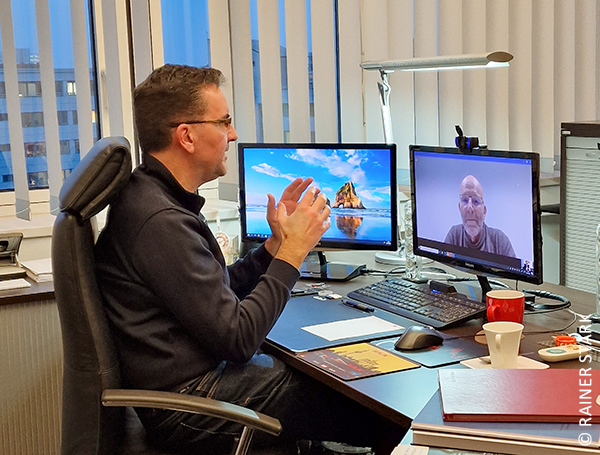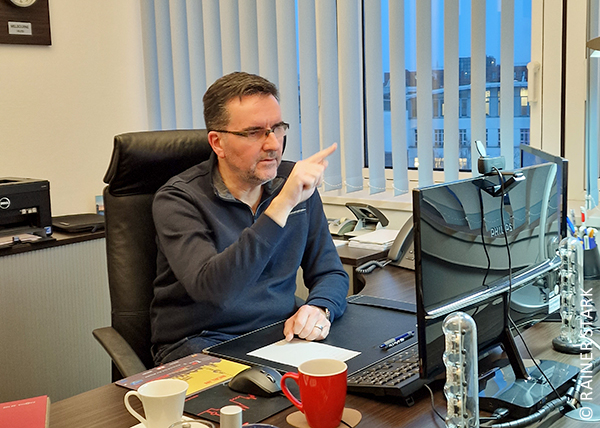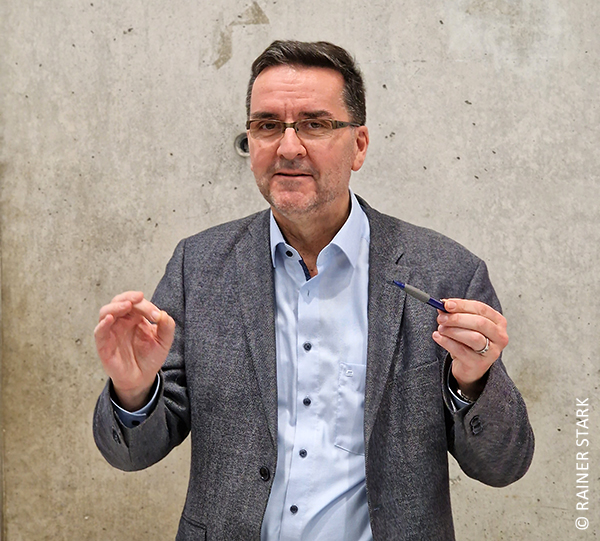
|
Do we need to reinvent product development?An Interview with Rainer Stark New technological trends and market requirements are changing the way we develop products. In an interview with the PROSTEP newsletter, Professor Dr.-Ing. Rainer Stark, head of the Industrial Information Technology department at the Technical University of Berlin and a member of the prostep ivip Association board, explains what challenges the current digitalization trends pose for product developers in companies. 
Question: Professor Dr.-Ing. Stark, last year you wrote a book about virtual product creation. What was the motivation behind book? Stark: There were actually three things motivating me: One is the question of how we can make it easier for people from different walks of life – students, managers, specialists – to understand virtual product creation and the various technologies involved. The second is the challenge of how to use these technologies, how to introduce them, how to culturally maintain them and how to change the processes. Reconciling that with what the world will look like in the future and what new things will be added to the list was the third motivating factor. Question: Peter Bilello from CIMdata recently said that product development as we know it is dead. Do you agree? Stark: Dead is a strong word, but I would agree that it no longer has a future. First of all, new technologies from the IT world are creating new opportunities and enticing us to use them profitably. Artificial intelligence is one example. Then there are the technological changes to the product systems and plants that we develop and the way in which they are used, for example as the result of new driveline concepts or new services. Question: What specific challenges do trends like servitization pose as far as companies are concerned? Stark: The trend toward servitization means that engineers have to give more thought to the way something is used, especially when developing durable capital goods. They have to think about how they can provide a service, and perhaps also understand what is happening in the field. Companies also face the challenge of increasing their development capacity by utilizing the many different types of data and information. Their IT departments have to make it possible to integrate an increasingly large portfolio of applications. And our desire to build larger systems of systems is making the model worlds in systems engineering much more complex. Question: If I understand you correctly, you’re talking about the digital thread, i.e. linking information across systems and domains? Stark: Marketing is sensationalizing the digital thread. It ultimately all comes down to enterprise architecture integration. Vendors are all aiming to build larger system architectures. They hoist their portfolio onto a platform and offer users an ecosystem in which they can do cool things. For this to happen, the customers have to enter this ecosystem with their data and models. But they still need to be able to move the models back and forth between these data spaces. We have not yet found solutions for this in the prostep ivip association either, because it goes beyond federated PLM. Question: Aren't initiatives like GAIA-X and Catena-X supposed to create these shared data spaces? Stark: Catena-X has gained momentum thanks to the lead taken by the two southern German carmakers and expects GAIA-X to deliver results. But it's not yet clear how quickly providers here in Europe will create their data spaces using these types of protocols and whether or not the Americans will offer this in their ecosystems. Another issue is the semantics we want to map in the platforms. The prostep ivip Association, for example, is thinking about creating its own engineering data space. Question: PLM vendors are expanding their platforms primarily through acquisitions. Is this the right way to go to create modular, federated architectures? Stark: I try to look at it from a neutral standpoint. The vendors are of course interested in keeping their platforms and architectures in good working order for at least ten to 15 years. On the other hand, the oligopoly of solution providers is a problem for the entire community because plug and play doesn't work the way users would like it to and need it to. Small and medium-sized companies in particular are faced with the problem of keeping their architecture reasonably flexible as they don't have the same size workforces as large companies. Question: One of the trends you alluded to is AI, which is making the headlines with Chat GPT. What impact will it have on product creation in the future? Stark: I firmly believe that in ten years' time every development engineer will be using a bot as an assistant and that AI components will be part of these bot systems. The question is how to train engineers and development teams so that they are able to create their designs faster and more precisely while at the same time preserving their solid technical know-how. The problem with these AI solutions is that you almost always get a result, so it's up to you to question the extent to which you can trust it. But suggestions as to what you could do differently when modeling will become normal tools. Question: Don't we actually also need a new generation of CAD systems if we want to be able to provide better support for future topics like generative design? Stark: The research community did at one time give thought to how functionally graded material behavior could be modeled but then didn't pursue it any further. Unfortunately, we engineers do not give enough thought to modeling as a future topic to be tackled together with materials scientists and production engineers. We have new options for developing the models and gearing the CAD systems to these models accordingly, but we all know from experience that there is great reluctance when it comes to making changes to long-established core CAD systems. But there are other forms of representation, such as cell models, that could be used to a greater extent. Question: Things have quietened down where model-based systems engineering is concerned. Has its use in industrial applications now been embraced? Stark: Key initiatives that place greater focus on systemic thinking are already underway, but using different approaches. Some companies have reorganized and are trying to take a more stringent approach using the same resources. But there are also companies that are trying to figure out what this means in terms of our model world. 
Question: Carmakers are trying to place greater focus on software development. What do you think about this trend? Stark: Software developers have created their own world in terms of how they go about developing something and what tools they use to do this. The question is how do we integrate their DevOps in the V-model used to develop technical systems? At the moment, we store one world in the PDM/PLM environment and the other in GitHub or other ALM solutions. If we have a control function that is made available by software, then this control cannot happen at the end. We actually need to map the effect of the software on the technical system for every drop. An interesting question is whether to outsource the software to a company like Bosch or Conti or create it yourself. This results in all kinds of different constellations, especially in the case of a new powertrain. On the one hand, OEMs want to ramp up their own capacities, but they don't yet have the requisite know-how when it comes to systemic development and need to recruit people with the appropriate skills. The deck is being reshuffled in the interplay between traditional system suppliers, IT suppliers and OEMs. Question: How do you see the future of cloud PLM? Are companies starting to move PLM to the cloud? Stark: I think the answer to that question is a resounding "yes". In five years' time, most companies will be cloud-based. Even we, as a university institute, have already undergone a certain metamorphosis. We still run the Siemens solutions Teamcenter and Tecnomatix and a few smaller applications on premise but use 3DEXPERIECE and Fusion 365 from the cloud. The need for scalable cloud solutions is growing, driven in particular by mobile working and the necessity of being able to access data from anywhere. The only question is how the cloud is organized, i.e. whether it is an internal cloud with its own server farm or an external cloud operated by an external provider. We need to take a much closer look at what we mean by cloud solution. A scalable IT environment with basic services is one thing and the PLM services on top are another. This may even go so far as the PLM vendors becoming PLM solution operators and assuming responsibility for managing the solution, as I described in my book. Professor Dr.-Ing. Stark, thank you very much for talking to us. 
About Rainer Stark Professor Dr.-Ing. Rainer Stark (born 1964) has been head of the Department of Industrial Information Technology at the Technical University of Berlin since 2008 and is a member of the prostep ivip Association's board. He also served as director of the Virtual Product Creation division at the Fraunhofer Institute for Production Systems and Design Technology (IPK) until 2021. Stark studied mechanical engineering at the Ruhr University Bochum and Texas A&M University (USA) and subsequently worked as a research assistant in the department of Design Engineering/CAD at Saarland University. After obtaining his doctorate, he joined Ford Motor Company Europe, where he was technical manager responsible for virtual product creation and methods. |
|
| © PROSTEP AG | ALL RIGHTS RESERVED | IMPRINT | PRIVACY STATEMENT | YOU CAN UNSUBSCRIBE TO THE NEWSLETTER HERE. |
